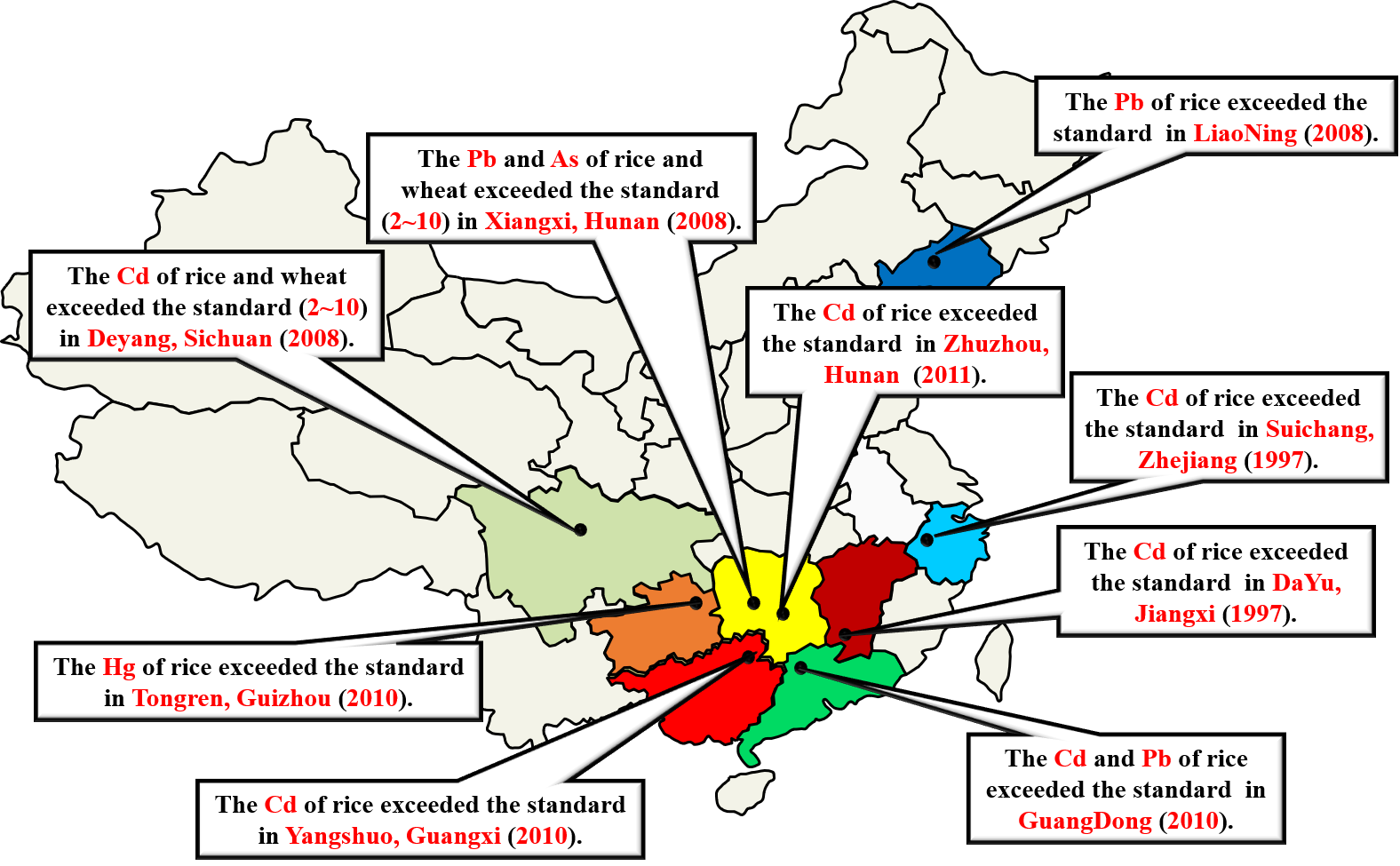There are many reports on toxic elements contamination in agricultural product (see in Figure 1). Conventional analytical techniques have obtained good detection limits, sensitivity, and stability in agricultural product. However, almost all these techniques produce large amounts of toxic wastes, and require the consumption of chemical reagents for digesting samples, which are time-consuming, complex to operate, and may introduce pollutants into ecosystems. Laser-induced breakdown spectroscopy (LIBS) is a spectroscopic technique for material composition analysis. With the characteristics of minimal sample preparation, rapid analyzing speed and multi-elemental analysis, it is a useful tool for rapid, realtime and in situ measurements for qualitative or quantitative analysis, and has been widely applied in agriculture and other fields. Howerve, the stability and sensitivity of toxic elements determination are still unsatisfactory in agricultural product using LIBS.

Figure 1. Incomplete distribution map of rice pollution in China.
To study how to detect toxic elements in rice, Prof. Li Xiangyou and Dr. Yang Ping of LIBS team (WNLO) proposed a method called phase transformation method in LIBS, in which HCl was used as an extractant to extract toxic elements from rice to solution, and the solution was evaporated on a glass slide, then the elements can be determined by just analyzing the solid on the glass slide. By this method, the toxic elements in rice can be easily detected and the limit of detection (LOD) can be improved significantly. Cd and Pb elements were used as two examples to test the proposed method, and the LODs of Cd and Pb elements in rice can reach 2.8 and 43.7 μg/kg under optimized conditions, respectively, which are sufficiently low to meet the pollution standards. For Cd element, the LOD meets the environmental quality standards for rice in China (200 μg/kg) for the first time by LIBS. For Pb element, the LOD is much lower than the rice pollution standards, 200 μg/kg for Pb in China. The results were shown in Figure 2.

Figure 2. Calibration curves of (a) Cd II 214.44 nm, (b) Pb I 405.78 nm.
On August 11, 2018,the paper “ High-sensitivity determination of cadmium and lead in rice using laser-induced breakdown spectroscopy ” was published in Food Chemistry which belongs to the Elsevier (Food Chemistry, 2019, 272, 323-328). This research was financially supported by the Major Scientific Instruments and Equipment Development Special Funds of China (No. 2011YQ160017), the National Nature Science Foundation of China (No. 6157031235), and the China Postdoctoral Science Foundation funded project (No.2017M622415). The paper link:https://doi.org/10.1016/j.foodchem.2018.07.214.